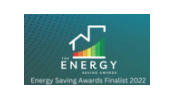In this three-part series on sustainability & water heating, Adveco considers the choices available to commercial organisations that wish to advance decarbonisation strategies in their buildings through the implementation of more sustainable hot water.
In this first part we consider some of the basic constraints of designing water heating applications, the technology available and the role of air source heat pumps…
Which Path Is Right For Commercial Properties?
Estimates vary, but it is generally accepted that buildings are responsible for as much as 50% of the nation’s carbon emissions, with much of the existing building stock still dependent on gas, which, while increasingly efficient to use is a ‘dirty’ fossil fuel. Daily hot water usage can potentially account for as much as 30% of a commercial building’s daily energy demands so is a notable component of an organisation’s emissions. So sustainability & water heating go hand in hand, and the latter should be one of the first considerations within a decarbonisation strategy.
The relatively lower cost of gas compared to grid electricity, and the necessary high working flow temperatures it delivers have therefore made it historically the energy of choice. This becomes problematic if sustainable operations are now the goal. As a matter of course, new builds, unless exhibiting large demands for gas, will struggle to receive permission (under Part L of the building regulations) for a new gas connection and as a result, are going ‘all electric’ for heating and hot water. With modern construction fabric and insulation, this approach can pay dividends. For legacy properties requiring refurbishment, the choices become more problematic, especially for space heating where modern low-temperature systems need replacement pipework and heat emitters or will fail to deliver. Though this is not an issue for replacement hot water, the complexity of both new build and refurbishment can still suffer costly pitfalls in the drive to sustainability. With electricity on average currently costing as much as 3.8 times that of gas, serious consideration needs to be given to a selection of technologies available to ensure that any changes to a hot water system balance the carbon reduction with the capital and operational costs.
The Options For Sustainable Water Heating
There are several options when it comes to implementing a hot water system and as we have intimated some are driven by finance others by the desire to be environmentally aware. Other factors though can include everything from geology to available space. A building’s location will instantly direct certain decisions as the hardness or softness of the water will impact options. For instance, stainless steel cylinders will be preferential in soft water areas as they are resistant to the corrosive nature of the water, whilst lower-cost glass-lined vessels are preferable in harder water areas. However, high-intensity heating, such as delivered by electric immersion can be extremely detrimental in hard water regions, accelerating limescale generation to the point that it can irreparably damage a system in a matter of months if not correctly maintained.
That does not preclude electricity as a choice, but it does affect how applications should be designed. The real leading question is do you choose gas or electricity? If gas, do you opt for direct or indirect heating systems or if electricity do you choose immersion or electric boiler as your source of thermal energy? Whichever route you decide upon, your system will additionally require a low-carbon heat source which will preheat the water reducing the energy consumption of the water heater, and in turn, reduce carbon emissions and the running costs of the water heater.
There are several choices for securing low carbon heat, including biomass; combined heat and power (CHP); ground or water source heat pumps; air source heat pumps (ASHP), solar photovoltaics (PV) and solar thermal. Through a mix of cost and simplicity, the best technologies to use for domestic hot water (DHW) systems are either ASHP or solar thermal.
Heat pumps are a technology that operates most efficiently at lower temperatures, making it highly applicable to domestic applications, but commercial DHW systems require 60°C working flow for safe operation and anti-legionella processes. The heat pump can be pushed to deliver a higher percentage contribution, generating temperatures of 45-50°C for preheat, but this at the cost of performance efficiency, requires electrical energy, and that has operating cost implications. Compared to an equivalent-sized direct-electric (ie, from the grid) system, one with an ASHP can achieve carbon reductions of 42-47%, whilst saving 25-35% of the energy costs. The system will still be required to top up heat to the necessary 60°C, using either immersion or an electric boiler. This, combined with the heat pump’s reduced operational efficiency means it will still be much more expensive to run than an equivalent-sized gas-fired system based on a modern and efficient (109% net) water heater.
The recommendation, in this case, is to keep electrical demand down by increasing the size of the hot water storage which is then heated more slowly. This is very different to the high energy input, low storage seen with gas-fired systems. A 30kW energy source can heat 750 litres/hour by 34°C, so when the system draws hot water at a faster rate than it can be heated to 44°C for hot showers you start to get complaints that the water is ‘cold’. The larger volume cylinder helps to overcome this undersizing allowing for a two-hour reheat cycle that maintains enough water at 60°C to meet daily demand, whilst slowly heating reserves through the night when demand is minimal to meet the morning peak.
Despite gaining improved sustainability & water heating modernisation the carbon savings and costs no longer align.
Even with an ASHP operating at optimum efficiency (for 35% recorded reduction in energy) costs would be close to three times that of gas alone, so it is inherently important to consider the nominal value of the carbon reduction when planning a refurbishment from gas to electricity.
However, we can still take advantage of solar thermal which can be employed to offset energy use in gas-fired systems as well as offsetting costs in electric/ASHP applications.
We will discuss this further in part 2













